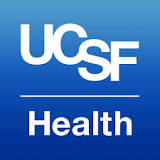Effect of Early Limited Formula on Total Serum Bilirubin Among Newborns With Hyperbilirubinemia
| Status: | Withdrawn |
|---|---|
| Conditions: | Gastrointestinal |
| Therapuetic Areas: | Gastroenterology |
| Healthy: | No |
| Age Range: | Any |
| Updated: | 11/17/2018 |
| Start Date: | July 2015 |
| End Date: | June 2016 |
The investigators propose to conduct an exploratory pilot study, enrolling 30 exclusively
breastfeeding newborns 36-96 hours of age, whose Total Serum Bilirubin (TSB) is within 0.1-3
mg/dl of the American Academy of Pediatrics (AAP)-recommended treatment thresholds for
Phototherapy (PT). These newborns will be randomly assigned to receive either 10 cc
extensively hydrolyzed formula following each breastfeeding using cup, spoon or syringe, or
to continue exclusive breastfeeding. Infants will be followed at 1, 2, 3 and 6 months to
assess breastfeeding duration and use of formula and complementary foods. Our hypothesis is
that limited, small amounts of formula administered without a bottle immediately following
breastfeeding might reduce the incidence of severe hyperbilirubinemia among newborns at
increased risk of TSB exceeding AAP-recommended thresholds for beginning phototherapy.
breastfeeding newborns 36-96 hours of age, whose Total Serum Bilirubin (TSB) is within 0.1-3
mg/dl of the American Academy of Pediatrics (AAP)-recommended treatment thresholds for
Phototherapy (PT). These newborns will be randomly assigned to receive either 10 cc
extensively hydrolyzed formula following each breastfeeding using cup, spoon or syringe, or
to continue exclusive breastfeeding. Infants will be followed at 1, 2, 3 and 6 months to
assess breastfeeding duration and use of formula and complementary foods. Our hypothesis is
that limited, small amounts of formula administered without a bottle immediately following
breastfeeding might reduce the incidence of severe hyperbilirubinemia among newborns at
increased risk of TSB exceeding AAP-recommended thresholds for beginning phototherapy.
Inclusion criteria
- Healthy infants ≥ 35 weeks
- Neonates 36-96 hours old
- Exclusively breastfeeding
- TSB 0.1-3 mg/dl below AAP-recommended PT threshold
- TSB < 6 hours ago
- Mothers English-speaking or Spanish-speaking
Outcome Measures
- Primary outcome: Total Serum Bilirubin
- Secondary clinical outcomes: Phototherapy, hospital readmission, exclusive and partial
breastfeeding at 1 week, 1 month, 2 months, and 3 months; breastfeeding self-efficacy
- Healthy infants ≥ 35 weeks
- Neonates 36-96 hours old
- Exclusively breastfeeding
- TSB 0.1-3 mg/dl below AAP-recommended PT threshold
- TSB < 6 hours ago
- Mothers English-speaking or Spanish-speaking
Outcome Measures
- Primary outcome: Total Serum Bilirubin
- Secondary clinical outcomes: Phototherapy, hospital readmission, exclusive and partial
breastfeeding at 1 week, 1 month, 2 months, and 3 months; breastfeeding self-efficacy
Inclusion Criteria:
- Healthy infants ≥ 35 weeks
- Neonates 36-96 hours old
- Exclusively breastfeeding
- TSB 0.1-3 mg/dl below AAP-recommended PT threshold
- TSB < 6 hours ago
- Mothers English-speaking or Spanish-speaking
Exclusion Criteria:
- Infants who have already received formula
- Infants who have received or are receiving Level II or Level III
- Infants who have already lost ≥ 10% birth weight
- Infants with Glucose-6-phosphate dehydrogenase deficiency, positive direct antigen
testing, cephalohematoma or other extensive bruising
We found this trial at
1
site
505 Parnassus Ave
San Francisco, California 94143
San Francisco, California 94143
(415) 476-1000

University of California, San Francisco Medical Center UCSF Medical Center is recognized throughout the world...
Click here to add this to my saved trials